See how the Divine Mandala Rangoli patterns fit within the traditional Rangoli art style while you read this article. Explore the fascinating world of Divine Mandala Rangoli, where creators fuse symmetrical patterns and a rainbow of colors to craft meaningful and spiritual creations. Contemporary innovation has masterfully combined with traditional symbolism to create new expressions.
The historical origin of Divine Mandala Rangoli
Traditionally, Mandalas represent the Sanskrit circles of oneness, completeness, and eternity. How did these ubiquitous symbols become in the intricate and multifaceted Rangoli tradition?
Since their creation in antiquity, mandalas have been a component of religious ceremonies and spiritual activities. For eons, they have represented the universe. Due to their complex patterns and radial symmetry, mandalas are an effective tool for meditation and achieving a higher state of consciousness. All these civilizations and faiths, from Christianity to Hinduism, acknowledge their spiritual significance. shifting to courtyards from holy spaces.
The Rangoli’s History
Hinduism’s Vedic era is when rangoli first appeared. Furthermore, several scholars assert that this manner of expression originates from the prehistoric age.
Prehistoric early man held the following five factors to be influential in all aspects of human life, according to research:
- Heaven
- Earth
- Fire
- Water
- Air
Early ancestors drew elaborate patterns in geometric forms to attract beneficial cosmic power, protecting themselves from evil and bad energy. Past civilizations in the Indus Valley and Harappan areas left evidence of using similar motifs in various designs. Others served as a means of shielding houses and towns from evil energy, yet others represented talisman energies.

Divine Mandala Rangoli Mentioned in Old Indian Writing
Several important ancient Indian writings mention this art form.
For example, the Sanskrit word Natyashastra, written by Bharata Muni between 200 B.C. and 200 A.D., mentions this art form and covers Indian art. According to this scripture, artists placed a symmetrical mandala painted with colors and flowers on the stage before creating their artwork. They then praised the Gods and invited them to take their positions on the Mandala.
According to Indian philosophy, drawing an image of an eight-petaled lotus flower on a clean hardwood platform is a customary practice even today when starting a traditional puja or devotion.
The Story of Urvashi’s Birth
The Vishnudharmottara states that the apsaras appeared before Sage Narayana to divert him during his intense penance. The enraged sage used the mango juice from the neighboring trees to create the outline of a stunning woman to teach the apsaras a lesson.
The apsaras departed the area in shame after seeing how beautiful the form was. That exquisitely formed woman was none other than the Apsara Urvashi, bestowed to us by the guru.
The Story of Chitra Lakshana Legend
In a former kingdom, there lived a priest and his son. The king and the people of the entire realm held them in the highest regard. The kingdom mourned deeply after the passing of the priest’s son. The universe’s creator, Lord Brahma, was the object of their first prayers.
Lord Brahma greeted them, amazed by their affection for the priest’s kid. He gave them the task of sketching the priest’s son’s portrait. With unwavering dedication, the villagers followed his orders and meticulously sketched the son’s likeness on freshly cleansed soil using natural colors and flours.
Lord Brahma revived the son and also breathed life into the picture. At that point, people began to create forms and faces in front of their houses to appease the gods and bring them pleasure.
The connection between Margazhi Month and Rangoli
People highly regard these Hindu art creations, especially during the month of Margasira. In Tamil Nadu honor and devote this month to the worship of Andal Amman and Lord Vishnu. People widely recognize the legend surrounding Andal Amman and Lord Vishnu. There was a follower of Lord Vishnu in the Tamil Nadu area in the eighth century. He prayed a lot for a kid and was childless for a long time. Lord Vishnu’s mercy bestowed upon him a daughter.
Hence, it is customary for single girls to wake up early on Margasira and admire their gorgeously designed house fronts in an attempt to find suitable husbands. A well-crafted rangoli design symbolizes the goddess Lakshmi and is revered as her alternate form. Andal, a manifestation of Lord Vishnu, wrote the Tamil devotional poem Thiruppavai.
Steps to Draw Divine Mandala Rangoli
1. Establish the Dot Grid
Organize the dot grid: Put the dots in a square layout, 5 rows and 5 columns apart.
Ensure uniform spacing of dots, around 1-2 cm apart, for a balanced pattern.

2. Create the Mandala in the center
Draw the circle in the center: Draw a little circle on the center dot.
Make the encircling petals: Create a design like a flower by extending lines from the center circle to the surrounding dots. This will serve as your mandala’s central component.

3. Include geometric shapes or petals
Draw flowers or geometric forms surrounding the core circle by joining dots that are next to one another. Either straight or curved lines can join each petal.

Symmetrical Design: To preserve the harmony of the mandala, make sure that the petals or forms are symmetrical.
4. Enlarge the Mandala
Include external layers: Around the initial set, add more layers of petals or forms, stretching from the formed shapes to the subsequent set of dots. Every successive layer needs to be bigger than the one before it.
Make use of dots as a reference: Use the outer dots as a reference to position and size the other layers.

5. Improve Specifics
Create elaborate patterns: Insert tiny ornamental elements, such as curves, lines, or smaller petals, inside each petal or form. This makes the mandala more intricate.
6. Finishing Touches: Apply a brush or your finger to smooth any sharp edges in the pattern, ensuring that the lines and shapes are clean.
Balance the design: Distribute details evenly to maintain a balanced and symmetrical mandala.
Add finishing touches: Finish the mandala by adding last details, such as highlights, smaller circles, or dots. Make sure the design is eye-catching and harmonious.
Conclusion
Thus, today let us create the most beautiful existence possible by adorning it with the hues of virtues. This soothes and helps everyone around us in addition to keeping us extremely light and comfortable (and enhancing the strength of our aura). Let us attain such immense strength that we may consistently embody these qualities (such as sweetness, smiling faces, etc.) in our lives, therefore playing a crucial role in restoring the heavenly realm Sat Yuga!


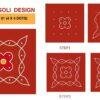

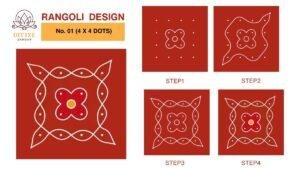
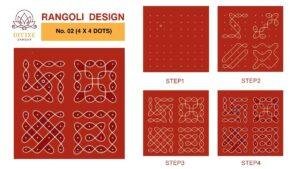
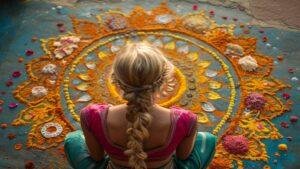






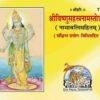





Add comment